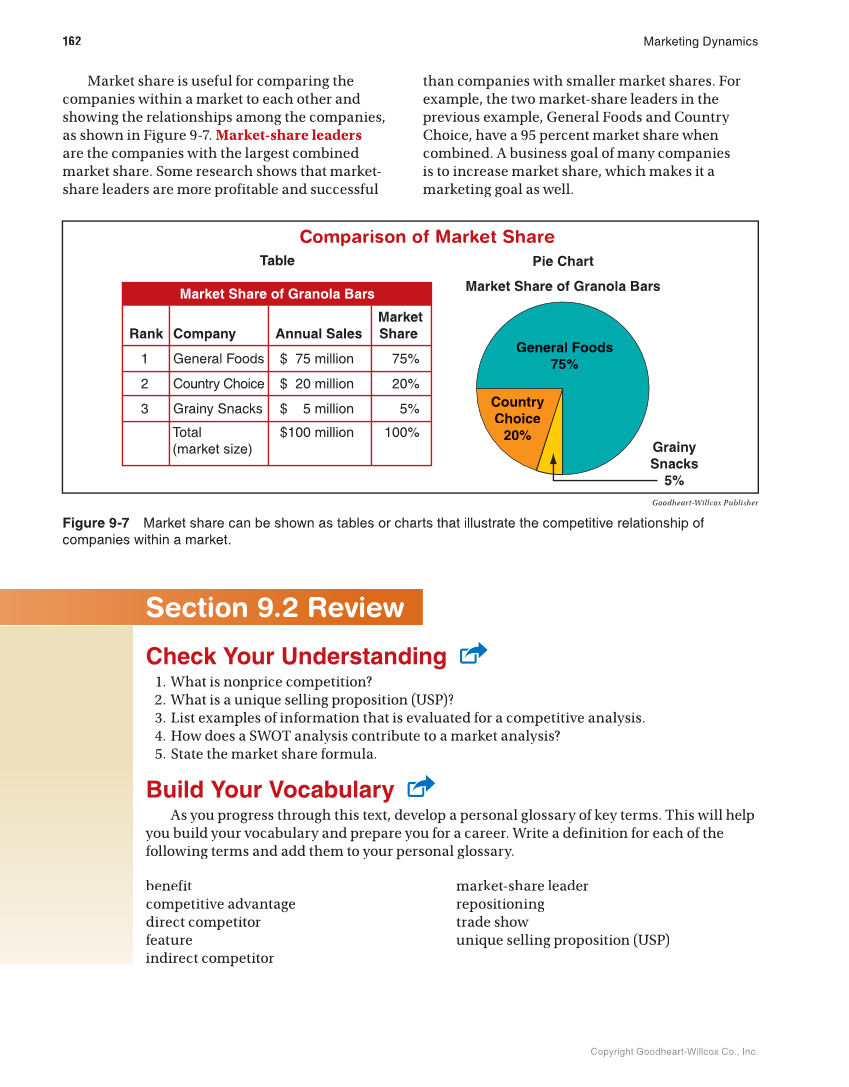162 Marketing Dynamics Copyright Goodheart-Willcox Co., Inc. Market share is useful for comparing the companies within a market to each other and showing the relationships among the companies, as shown in Figure 9-7. Market-share leaders are the companies with the largest combined market share. Some research shows that market- share leaders are more profitable and successful than companies with smaller market shares. For example, the two market-share leaders in the previous example, General Foods and Country Choice, have a 95 percent market share when combined. A business goal of many companies is to increase market share, which makes it a marketing goal as well. Goodheart-Willcox Publisher Figure 9-7 Market share can be shown as tables or charts that illustrate the competitive relationship of companies within a market. Comparison of Market Share Pie Chart Market Share of Granola Bars Market Rank Company Annual Sales Share 1 General Foods $ 75 million 75% 2 Country Choice $ 20 million 20% 3 Grainy Snacks $ 5 million 5% Total $100 million 100% (market size) Table Market Share of Granola Bars General Foods 75% Country Choice 20% Grainy Snacks 5% Section 9.2 Review Check Your Understanding 1. What is nonprice competition? 2. What is a unique selling proposition (USP)? 3. List examples of information that is evaluated for a competitive analysis. 4. How does a SWOT analysis contribute to a market analysis? 5. State the market share formula. Build Your Vocabulary As you progress through this text, develop a personal glossary of key terms. This will help you build your vocabulary and prepare you for a career. Write a definition for each of the following terms and add them to your personal glossary. benefit competitive advantage direct competitor feature indirect competitor market-share leader repositioning trade show unique selling proposition (USP)
